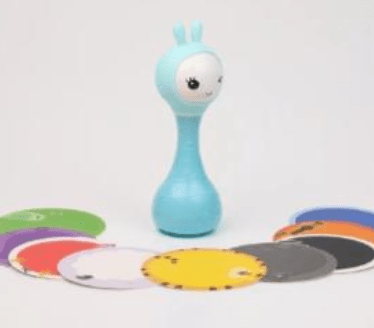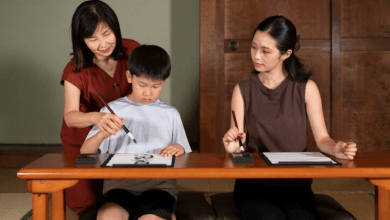
Newborns experience the world through their senses, and every sight, sound, and touch helps shape their early development. In the first few months, babies rely heavily on sensory input to build neural connections, improve motor skills, and even regulate emotions. Simple interactions, like a parent’s voice or a soft toy’s texture, can significantly impact their cognitive growth. Sensory play isn’t just about keeping a baby entertained—it’s a crucial part of learning. For example, when babies play with toys, they begin to understand cause-and-effect relationships, like shaking a rattle to produce sound. High-contrast patterns or gentle music can also soothe a fussy baby while encouraging focus. In this article, we’ll explore the best sensory toys for newborns and how they support early development.
How Do Newborns Learn Through Their Senses?
From birth, babies absorb information through touch, sight, sound, and even taste. Their vision is initially blurry, but they can detect bold, high-contrast patterns, which is why black-and-white toys captivate them. Similarly, newborns recognize familiar voices and are comforted by rhythmic sounds, like a soft lullaby or the crinkle of a toy. Touch is equally important—textured toys help babies explore different surfaces, strengthening their grasp and fine motor skills. Even mouthing toys (which happens as early as 3-4 months) is a way for them to learn about shapes and textures. Parents often wonder, when do babies play with toys? The answer is: from day one! Simple sensory interactions, like a parent guiding their baby’s hand over a soft fabric book, count as early play.
Top Sensory Toys to Stimulate Your Newborn’s Vision
High-Contrast Toys
Newborns see best in high-contrast colors like black, white, and red because their developing eyes can’t yet distinguish subtle shades. Toys with bold geometric patterns, such as flashcards or stuffed animals with stark designs, grab their attention and encourage visual tracking. For example, a black-and-white spiral pattern on a crib mobile can hold a baby’s gaze longer than pastel colors, aiding focus and eye muscle development. These toys also promote cognitive growth by helping babies recognize shapes and patterns early on. Parents can place high-contrast toys about 8-12 inches from their baby’s face—the ideal distance for their limited vision. Over time, this stimulation strengthens their ability to follow moving objects, a skill crucial for later reading and hand-eye coordination.
Soft, Moving Mobiles for Visual Tracking
Mobiles with gentle, swaying motions are excellent for developing a newborn’s visual tracking skills. As babies watch the mobile’s slow movement, they learn to coordinate their eye movements, which is essential for depth perception. Opt for mobiles with simple, high-contrast designs or soft, muted colors if placed closer to the baby. A well-designed mobile also encourages calmness, making it a great addition to the nursery. However, avoid overstimulating designs with too many colors or fast movements, as these can frustrate a newborn. Instead, choose one with a smooth rotation and maybe a soft chime to engage both sight and hearing.
Best Auditory and Tactile Toys for Newborns
Gentle Rattles and Musical Toys
Soft rattles and musical toys introduce babies to cause-and-effect learning while soothing them with rhythmic sounds. A lightweight rattle that makes a gentle noise when shaken helps babies connect their actions to outcomes, fostering early problem-solving skills. Musical toys with lullabies or nature sounds can also provide comfort during fussy moments. When selecting auditory toys, prioritize volume control—newborns’ ears are sensitive, and loud noises can startle them. Look for toys with adjustable sound levels or those that produce soft, melodic tones. Even a simple wrist rattle can delight a baby while encouraging them to move their arms, aiding motor development.
Textured Teethers and Soft Crinkle Toys
Textured toys, like silicone teethers or fabric crinkle books, engage a baby’s sense of touch and hearing. The varied surfaces—bumpy, smooth, or ridged—help develop tactile awareness, while the crinkling sound adds an auditory element. These toys are especially useful when babies begin teething, as they can safely chew on them for relief. Crinkle toys also encourage grasping and squeezing, which strengthens hand muscles. For example, a small stuffed animal with a crinkle layer inside keeps babies entertained while improving their fine motor skills. Always choose toys made from non-toxic, baby-safe materials since newborns often explore with their mouths.

Safety Tips for Choosing Newborn Sensory Toys
Always prioritize safety when selecting toys for newborns. Avoid small parts that could pose a choking hazard, and ensure toys are made from non-toxic, BPA-free materials. Soft toys should be free of loose threads or detachable decorations that a baby might pull off. Check for sturdy construction—rattles should withstand chewing, and mobiles should be securely attached to the crib. Regularly inspect toys for wear and tear, especially if they’re frequently mouthed. Lastly, supervise playtime to ensure babies use toys as intended, reducing risks.
Conclusion
Choosing the right sensory toys can make a significant difference in your newborn’s early learning and happiness. From high-contrast visuals to soothing sounds, each toy plays a role in developing their senses and motor skills. Brands like Alilo offer a variety of thoughtfully designed sensory toys that cater to different developmental stages, making them a great option for parents. By selecting safe, engaging toys, you’re not just entertaining your baby—you’re giving them the tools to explore and understand the world around them.




